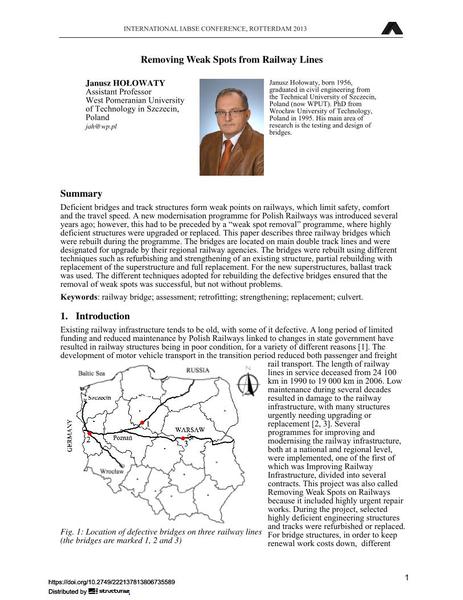Removing Weak Spots from Railway Lines

|
|
|||||||||||
Bibliographic Details
| Author(s): |
Janusz Hołowaty
|
||||
|---|---|---|---|---|---|
| Medium: | conference paper | ||||
| Language(s): | English | ||||
| Conference: | IABSE Conference: Assessment, Upgrading and Refurbishment of Infrastructures, Rotterdam, The Netherlands, 6-8 May 2013 | ||||
| Published in: | IABSE Conference, Rotterdam, May 2013 | ||||
|
|||||
| Page(s): | 242-243 | ||||
| Total no. of pages: | 8 | ||||
| Year: | 2013 | ||||
| DOI: | 10.2749/222137813806735589 | ||||
| Abstract: |
Deficient bridges and track structures form weak points on railways, which limit safety, comfort and the travel speed. A new modernisation programme for Polish Railways was introduced several years ago; however, this had to be preceded by a “weak spot removal” programme, where highly deficient structures were upgraded or replaced. This paper describes three railway bridges which were rebuilt during the programme. The bridges are located on main double track lines and were designated for upgrade by their regional railway agencies. The bridges were rebuilt using different techniques such as refurbishing and strengthening of an existing structure, partial rebuilding with replacement of the superstructure and full replacement. For the new superstructures, ballast track was used. The different techniques adopted for rebuilding the defective bridges ensured that the removal of weak spots was successful, but not without problems. |
||||
| Keywords: |
railroad bridge rail bridge strengthening assessment retrofitting replacement culvert
|
||||
